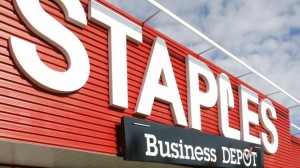In the digital age, people are more likely to use cloud computing, data storage, or home office set up instead of actual staffs like filing cabinet, thus the demand for paper products saw a general decline trend. Staples, the famous office supply retailer in Canada, decided to shut 15 stores of its 331 Canadian stores at the end of September. In order to cut costs to boost efficiency, Staples shift more of its business online and compete in online market with retailers like Amazon.ca. Staples said they would continue to close store in North America and it is estimated that $500 million in total can be saved by the end of 2015.
It is unsurprisingly that Staples choose to close some of their stores and concentrate more on online market. Actually, it’s a little bit late for them to make changes because they are supposed to follow the trend timely. Although Bricks-and-mortar office supply store still could gain profit, managers have to consider how many stores should stay open to meet the demand when analyzing the profits they made by each season. When a company’s profits dropped significantly, they should reset their value proposition and figure out how to adapt to the changing environment. For a brand positioning, points of parity should be considered first, then to find the points of differentiation. Right now for Staples, the most important thing is having points of parity in order to be a legitimate competitor in its specific office market. If they could not finish the transition quickly, they would continuing losing profits and market shares.
Work Cited
http://www.huffingtonpost.ca/2014/10/01/staples-shuts-15-stores-canada_n_5914986.html
http://www.referenceforbusiness.com/encyclopedia/Man-Mix/Managerial-Accounting.html
http://www.cbc.ca/news/business/staples-closes-15-canadian-stores-1.2783780
Pictures
http://www.cbc.ca/news/business/staples-closes-15-canadian-stores-1.2783780

